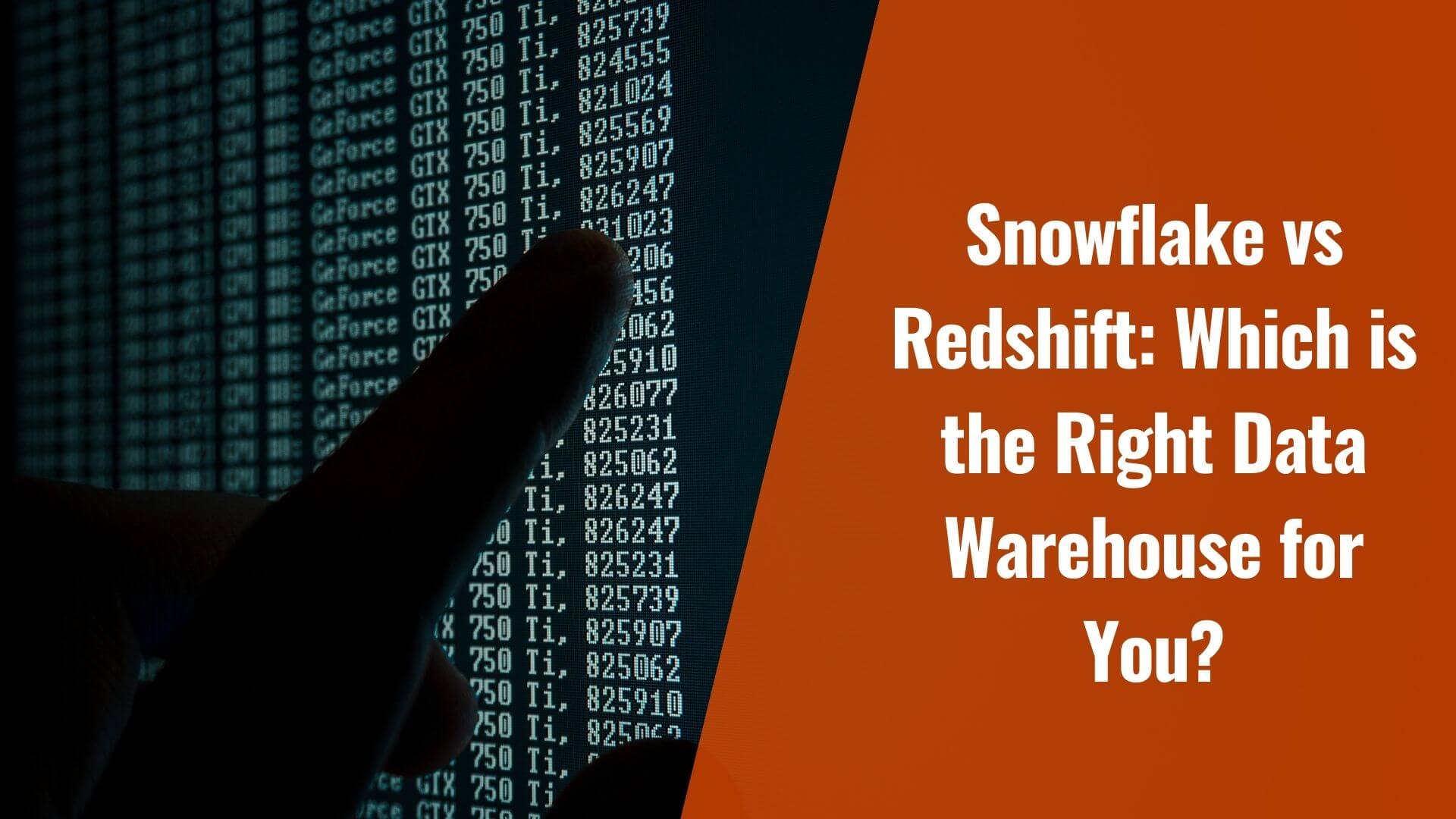
Snowflake vs Redshift: Which is the Right Data Warehouse for You
A plethora of surveys has shown that there is significant growth in the digital data that enterprises generate every day and it is becoming difficult for traditional on-premise systems to cope up with the enormous amounts of data. Also, the old methods require huge capital and resources.
Therefore, Cloud-based Data Warehouses are taking the place of traditional ones to collect, store and analyze data coming from multiple sources. There are a handful of modern data warehouses available in the market that do a great job.
Snowflake and Redshift are some of the best Cloud-based data warehouses. These two applications are the most talked-about cloud-based solutions to handle data. Hence, In this article, we are only going to discuss Snowflake and Redshift and understand the difference in features and functionalities between the two.
Let’s quickly jump into it.
What is Redshift ?
Redshift is a cloud-based, scalable data warehouse that is designed by Amazon. It is a massively parallel, column-orientated database deployed on the AWS platform that simply analyses all your data collected from Database, Data Warehouses and Data Lake while keeping the cost low.
The storage system of Amazon Redshift allows you to start with a small amount of data and expand it on large scales( in terabytes) with time.
Amazon Redshift data warehouse is a collection of computing resources which we call nodes, organization of these nodes in a group becomes the Cluster. Each of these clusters runs an Amazon Redshift engine and contains one or more databases. So, every cluster has a leader node and one or more compute nodes that collectively work to receive queries from the client applications and develop a suitable solution for the query and send it back to the client application. These compute nodes are further divided into node slices and these node slices also work parallel to perform operations and increase the performance of your Redshift data warehouse. Moreover, when you launch a cluster you need to specify the node type. There are basically two types of nodes, one is Dense Storage (DS) and another is Dense Compute (DC).
What is the difference between Database, Data Warehouse, and Data Lake?
What is Snowflake ?
Snowflake is an analytic data warehouse that is provided as Software-as-a-Service (SaaS). It is primarily available on AWS and Azure cloud platforms.
Snowflake’s architecture ensures fast, easy , and better performance of the operations involved in data analysis. Snowflake SQL is rich enough to meet most of the data warehouse requirements. It offers SQL commands like DDL, DML, and SQL functions. It also allows you to create User Defined Functions and stored procedures using Javascript. It is capable of processing both structured or semi-structured data effortlessly.
Snowflake eliminates the use of hardware and has a feature of automatic maintenance which means you do not have to invest your time maintaining the system. Like any other Data warehouse, it allows you to connect with most of the Data Integration tools, self-service BI tools and Visualisation tools such as tableau, power BI, Informatica, Apache Spark, etc. Even if this is not enough, you can use JDBC or ODBC drivers to connect from your applications.
Snowflake vs Redshift : Major differences between the Features
Now, we are all set to pick up on the distinguishing features of Snowflake and Amazon Redshift. Please consider these points to figure out which modern data warehouse is best for your enterprise.
1. Availability
Snowflake is an agnostic cloud provider. You can run snowflakes on Google Cloud, Azure or AWS. However, Redshift is only available on AWS.
2. Cost
Snowflake charges separately for compute and storage which means you only have to pay for storage if you are not computing.
Although, Redshift is having coupled pricing and you need to pay both for computation and storage. Yet, deep discounts are available on long-term commitments. Apart from this, Redshift has recently released a functionality called Redshift Spectrum which acts to decouple the compute and storage costs, yet it is not truly a data warehouse solution, it is like a query engine. However, it’s too late for this particular gain, specifically when we are talking about the decoupling of storage and computation.
3. Maintenance
We can assume Snowflake as Uber and Redshift as renting a car through airways. It simply means that just like Uber services, Snowflake provides more automated database maintenance features. If your Database administrator is not so advanced or does not have internal knowledge of the database, then it is fine to use Snowflake.
However, if you are going with Amazon’s Redshift, then you need to have a Database expert who has a very thorough knowledge of maintaining data warehouses.
4. Security
When it comes to security and compliance, they vary by tier. So, that means everything is not bundled together. In Snowflake Various editions are available, you can choose the edition of snowflake based on your domain and requirements. Yet, it’s not like that you can go for specific snowflake editions all the time, you have a choice.
In Redshift, security and compliance are enforced comprehensively for all users.
5. Backup
Backup or restore is almost instantaneous in snowflakes. The architecture of Snowflake is very unique. So, here in snowflake, when we do backup or restoring, it is not like copying the entire data.
Whereas, it is consuming more time for backup and restoration of data in Redshift when compared to Snowflake.
6. Scaling of data
In Snowflake, you can expand the data very easily and quickly. So, let’s say if your Dataset is increasing or decreasing, then you can scale down and scale up seamlessly and it becomes quite elastic to do such tasks in no time.
In Redshift, it sometimes may take hours to scale up or down the data warehouses.
7. Semi-structured data
We have discussed earlier that snowflake supports nested data as well. Snowflake has technology for semi-structured data storage. However, there is no such native support for semi-structured data in Amazon’s Redshift. It will be treated as a string and that data may be shown as opaque sheets.
Conclusion
I hope you got some clues about the difference in both the data warehouses. In my opinion, Snowflake is something that you can go for. Yet, if you have made up your mind to use Redshift then you can integrate with AWS Sagemaker and the AWS-related ecosystem to get your operations done seamlessly.





Comments
No comments yet.